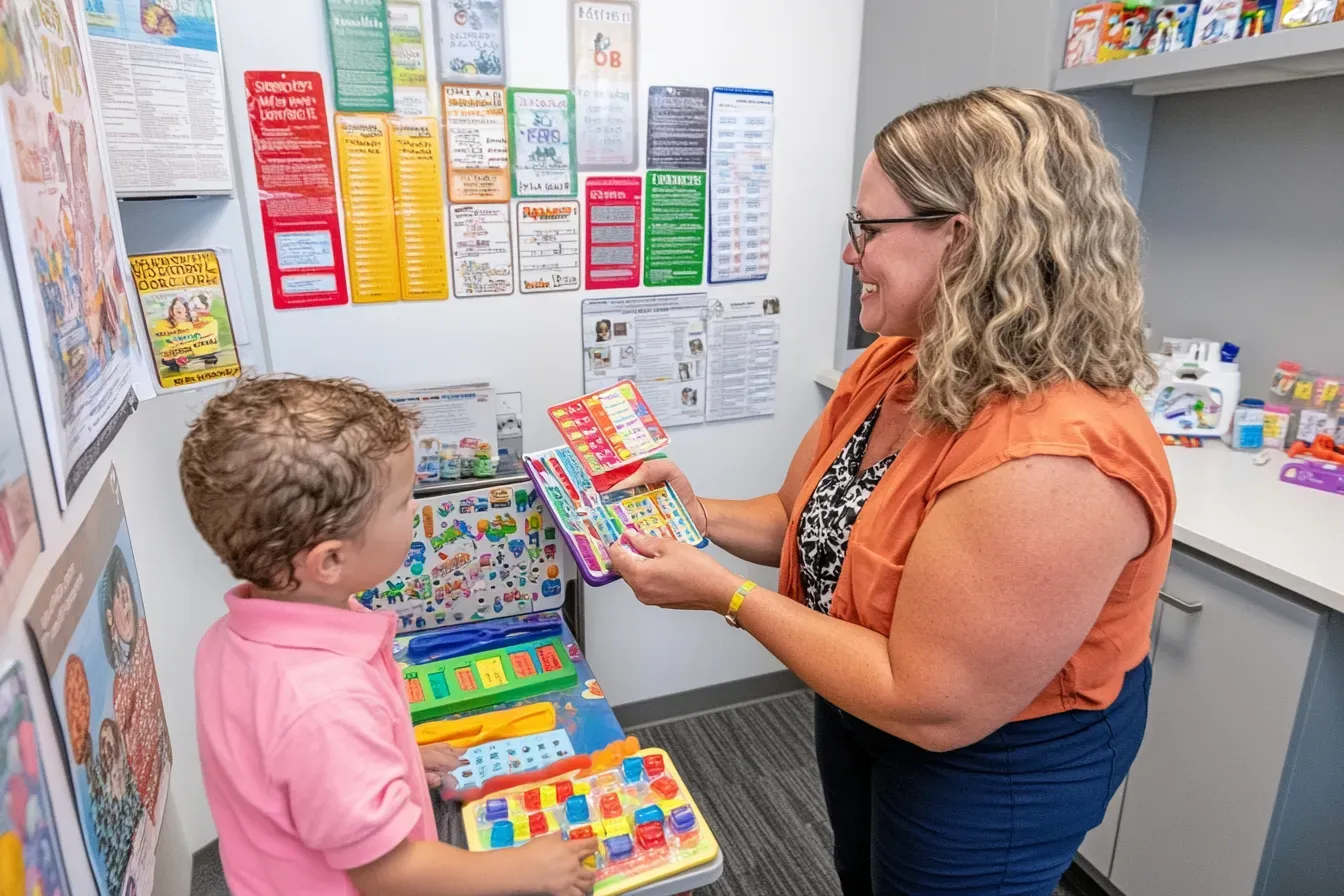High School Dropout Rate Is Decreasing but Race, Income & Disability Issues Persist for 2026
Completion of secondary education is often cited as a key developmental milestone, although not all pupils follow this route. Dropping out of high school is a choice made by some students, whether owing to financial difficulties or academic difficulties. But there are also some who gamble on becoming successful dropouts by following their interests as teenagers. However, the benefits of doing so may not be as obvious as first seem.
Levin and Belfied (2017), as cited by the National Center of Education Statistics (2020), revealed that each high school dropout cost the United States economy $272,000 due to “lower tax contributions, higher reliance on Medicaid and Medicare, higher rates of criminal activity, and higher reliance on welfare." The good news is that the status dropout rate or the percentage of all 16 to 24 years old who are not enrolled in school and have not received a high school diploma has decreased by 3.2% between 2010 and 2019. It is now at an all-time low at 5.1%. Still, dropout rates continue to be a problem because yet again U.S. schools are in fear of a dropout surge due to the COVID-19 pandemic.
This article comprehensively answers the question, “Why do students drop out of high school?" It will tackle relevant data on the current high school dropout rate and why it remains high in the United States. The guide will also discuss the causes, effects, and possible solutions to this concern.
High School Dropout Rate 2026 Table of Contents
- Key High School Dropout Rate Statistics for 2026
- Reasons Why High Schoolers Drop Out
- Innovative Pathways to Prevent High School Dropout
- Consequences of Dropping Out of High School
- How can affordable online education programs reduce financial barriers?
- What are the long-term career benefits of alternative educational pathways?
- What practical career transition support systems are available for high school dropouts?
- How can policy reforms and community partnerships strengthen dropout prevention?
- How can early intervention in middle school prevent future dropouts?
- What are the long-term outcomes of pursuing alternative education pathways?
- Dropout Prevention Resources for Families and Educators
- How does mental health affect high school dropout rates?
- How can high school dropouts access second-chance education opportunities?
- Can advanced online degrees overcome the challenges of leaving high school?
Key High School Dropout Rate Statistics for 2026
Dropout rates intersect with systemic issues on race, sex, and socioeconomic status. For example, areas with higher student crime rates also experience a large number of high school students dropping out. This section will demonstrate with the statistical data how these issues permeate the education system and give an idea of how many people drop out of high school each year.
Dropout Rate by Race
Between 2010 and 2019, there is a considerable improvement in high school student retention as there has been a decrease in the high school dropout rate by year for all races except Pacific Islanders (NCES, 2021). The rates, however, remain high for people of color. In particular, American Indian/Alaska Native high school students have the highest high school dropout rate at 9.6% (NCES, 2021). This is much higher compared to the overall average dropout rate of 5.1% (NCES, 2021).
Addressing disparities in education and dropout rates is crucial, especially among underrepresented communities. To help bridge the gap and support students in need, it’s essential to consider accessible and online MSW programs affordable to anyone that can empower social workers and educators to make a positive impact on these educational challenges.
According to the National Center for Education Statistics, the demographic breakdown of high school students who drop out are as follows:
A 2019 research by the United Way of King County provide some insight into why students of color are more likely to drop out than their white peers. They cited that as majority of teachers in public schools are white, students of color simply do not see themselves in their teachers. In addition, many families belonging to ethnic minorities are low- to middle-income households, making it difficult for the students to get access to the technologies and resources necessary to succeed academically.
Dropout Rate of Students with Disabilities
Special education is made available to students with disabilities through the Individuals with Disabilities Act (IDEA) passed in 1975. The 13 categories of disabilities according to IDEA are:
- Autism
- Deaf-blindness
- Deafness
- Emotional Disturbance
- Hearing Impairment
- Intellectual Disability
- Multiple Disabilities
- Orthopedic Impairment
- Other Health Impairment (due to chronic or acute health problems)
- Specific Learning Disability
- Speech or Language Impairment
- Traumatic Brain Injury
- Visual Impairment
Regarding this sector, how many students drop out of high school each year? The high school dropout rate for students with the above-mentioned disabilities (10.7%) is more than twice that of the dropout rate of students without disabilities (4.7%) in 2019 (NCES, 2021). According to NCES, in academic years 2018-2019:
- 72% of students with disabilities graduated with a regular high school diploma
- 16% of students with disabilities dropped out of school
- 10% of students with disabilities received an alternative certificate
Some reasons for this could be that while special education is available to them, not all students with disabilities are aware of them or have access to them. In some cases, it could be that the student has unique learning needs that the available programs cannot provide. When it comes to how many people drop out of college due to disabilities, has gone as high as 49.5% in four-year colleges (Welding, 2023).

Dropout Rate by Sex
In 2019, the high school dropout rate was higher among males (6%) than females (4.2%) (NCES, 2021). As shown in the data provided, this is true for every race/ethnicity except Pacific Islanders:
Dropout Rate by Household Income
There is a considerable improvement in the gap between families with the highest and lowest income rates in the aspect of student retention, with the high school dropout rate difference narrowing from 21% in 1990 to 8% in 2013. This is among the reasons why the high school dropout rate is so high in the U.S. Still, students from families with the lowest income are more likely to drop out than students from middle- and higher-income families. This is, of course, due to financial struggles related to sending kids to school. Here are the dropout rates in 2013 according to NCES:
Dropout Rate by State
In the years 2013-2017, the United States had an average high school dropout rate of 6% (NCES, 2020). The state with the highest dropout rate was New Hampshire at 9.9% (NCES, 2020). It is followed by Louisiana (9.6%), Nevada (9%), and New Mexico (8.6%).
In contrast, Massachusetts is the state with the lowest dropout rate at 3.8% (NCES, 2020). It is followed by the states of Maine, Hawaii, New Jersey, and Virginia, which all have a high school dropout rates of 3.9%.
Reasons Why High Schoolers Drop Out
Why do people drop out of high school? According to a study by Dalton, Glennie, Ingels, and Wirt, as cited by the National Dropout Prevention Center, the three main categories of reasons students drop out are school-related, family-related, and employment-related. This section will delve into each of these categories.
Understanding the factors contributing to high school dropout rates is essential, not only for educational institutions and policymakers but also for individuals who may be considering their future. Exploring potential career paths, such as what to do with a psychology degree, can provide insights into how education and career choices can impact one’s future and the broader community.
School-Related Reasons
The top three school-related reasons high school students drop out of school are they (1) missed too many school days (43.5%), (2) they thought it would be easier to get a general education diploma (40.5%), and (3) they were getting poor grades or failing school (38%) (National Dropout Prevention Center, n.d.). Read more on standard based grading vs. traditional grading.
This academic struggle may be traced to earlier school-related difficulties that were not addressed. For instance, the Annie E. Casey Foundation found that students who do not read well in third grade are more likely to drop out than finish high school.
Family-Related Reasons
While raising confident, well-adjusted kids is the goal of every parent, circumstances can get in the way. Family-related reasons include becoming pregnant, getting married, and having to take care of or support a family member (National Dropout Prevention Center, n.d.). This cause translates directly to the dropout rates by household income. Students whose families struggle financially are more likely to drop out of school.
The impact of household income on education is even more pronounced as thousands of students have dropped out of school due to the COVID-19 pandemic. The crisis has forced many students to focus their attention on finding employment as some of their family members lost their jobs.
Employment-Related Reasons
As mentioned, students leave school for employment reasons, that is, they have a job and could not manage to go to school at the same time (National Dropout Prevention Center, n.d.). According to Trends in High School Dropout and Completion Rates in the United States: 2019, a report by the National Center for Education Statistics, data from 2017 shows that:
- 46.7% of high school dropouts were employed
- 44.9% of high school dropouts were not part of the labor force
- 8.3% of high school dropouts were unemployed
Innovative Pathways to Prevent High School Dropout
Addressing high school dropout rates requires not only intervention but also innovation to adapt to the evolving needs of students. Leveraging technology and tailored educational programs presents a viable pathway to curbing dropout rates. For instance, online education platforms can provide students with flexible learning options, allowing them to balance academic commitments with personal or work-related responsibilities. These platforms also enable differentiated instruction, which caters to individual learning paces and styles.
One promising avenue is competency-based education, which allows students to advance upon mastering a topic rather than adhering to a fixed schedule. This model ensures that students do not feel left behind or overwhelmed, which are common precursors to dropping out. Additionally, creating localized partnerships between schools, community organizations, and businesses can offer mentorship and real-world learning experiences that keep students engaged.
For students who have already left school, second-chance education programs are indispensable. Many of these programs can be accessed via online formats, allowing individuals to achieve academic credentials or even higher degrees later in life. Exploring opportunities such as an accelerated bachelor degree program can help former students fast-track their higher education journey and align with their career goals. These programs can be particularly effective in mitigating the long-term economic disadvantages associated with dropping out.
Moreover, embedding social-emotional learning (SEL) into curriculums empowers students to better navigate personal and academic challenges. SEL helps build resilience, a crucial trait that can significantly reduce dropout rates when cultivated early. Teachers and counselors play a vital role in reinforcing these skills, further emphasizing the importance of a well-rounded support system on campus.
Policymakers must prioritize funding for such innovative approaches while encouraging educational research and scalable pilot programs to explore their impact. Such comprehensive solutions aim not only to reduce dropout rates but also to equip students with the tools they need for lifelong success.
Consequences of Dropping Out of High School
Opting not to finish high school is not without drawbacks. It can have a negative impact on a student’s future, particularly in terms of employment and earning potential. These consequences are outlined as follows:
- Lower Earning Potential. Individuals with less than a high school diploma earn $162 less weekly than those who completed high school. They also made up the highest percentage of unemployed people (11.7%) in America (U.S. Bureau of Labor Statistics, 2021).
- Unemployment Risks. College education has an influence on the employment opportunities available to a student. As such, someone who has not completed high school cannot proceed on to higher education, which would allow them to earn $276 more than the average earnings of all workers (U.S. Bureau of Labor Statistics, 2021) and would also put them at much less risk of unemployment.
- Susceptibility to Lifestyle Problems. High school dropouts are more susceptible to other problems, such as substance and alcohol abuse and other health risks. A report by the National Survey on Drug Use and Health titled “Substance Use among 12th Grade Aged Youths by Dropout Status" demonstrate the consequences of dropping out of high school through the following statistical data: 56.8% of high school dropouts smoke cigarettes41.6% of high school dropouts drink alcohol32.3% of high school dropouts binge alcohol31.4% of high school dropouts use an illicit drug27.3% of high school dropouts use marijuana9.5% of high school dropouts admit to nonmedical use of prescription-type drugs
- 56.8% of high school dropouts smoke cigarettes
- 41.6% of high school dropouts drink alcohol
- 32.3% of high school dropouts binge alcohol
- 31.4% of high school dropouts use an illicit drug
- 27.3% of high school dropouts use marijuana
- 9.5% of high school dropouts admit to nonmedical use of prescription-type drugs
How can affordable online education programs reduce financial barriers?
For students facing economic challenges, affordable online education provides a practical means to overcome the financial barriers often associated with traditional schooling. By reducing costs related to commuting, textbooks, and ancillary fees, these programs enable learners to re-engage with education in a flexible setting. Additionally, some institutions are adopting inclusive admission practices—such as waiving application fees—to further alleviate initial financial burdens. For example, prospective students can explore online schools with no application fee as a cost-effective pathway to higher education, ultimately contributing to dropout prevention efforts.
What are the long-term career benefits of alternative educational pathways?
High school dropouts increasingly benefit from non-traditional education routes such as vocational training, technical certifications, and community college programs. These paths focus on building industry-relevant skills that can translate into improved job prospects and long-term career stability. Evidence suggests that online programs often offer a cost-effective alternative to traditional education; for instance, studies show that is online degree cheaper. Aligning alternative credentials with labor market demands has proven to facilitate smoother workforce transitions, while strategic partnerships among educational institutions, industry leaders, and policymakers continue to enhance access to quality, affordable training.
What practical career transition support systems are available for high school dropouts?
High school dropouts can access targeted support through vocational training, apprenticeship initiatives, and specialized career transition programs designed to equip them with industry-relevant skills. These programs work collaboratively with local employers and training agencies to provide practical guidance and immediate skill development, leading to smoother workforce entry. Additionally, tailored pathways such as career changer programs offer accelerated routes for individuals looking to rapidly transition into new career fields without traditional academic prerequisites.
How can policy reforms and community partnerships strengthen dropout prevention?
Policy reforms and coordinated community partnerships play a crucial role in addressing dropout challenges by aligning education, social, and economic policies with student needs. Government initiatives that improve resource allocation for mental health services, teacher training, and career counseling in high-need communities foster a supportive environment for student retention. Local agencies and community organizations, when forming strategic alliances with school districts, can implement targeted intervention programs using data-driven approaches to monitor progress and refine strategies. Additionally, educators and policymakers can enhance their expertise and drive effective change by pursuing further studies, such as an online master's degree in educational leadership or policy development.
How can early intervention in middle school prevent future dropouts?
Research indicates that early academic and social-emotional interventions during middle school can significantly reduce the likelihood of high school dropout. Targeted programs—including personalized tutoring, mentoring, and tailored counseling services—address learning gaps and promote resilience among at-risk students. These initiatives enable educators to identify and address challenges before they escalate, thus fostering a more stable and supportive transition toward high school success. Early intervention strategies also pave the way for flexible educational pathways, such as a fast online associates degree, offering students an alternative route to academic and career advancement.
What are the long-term outcomes of pursuing alternative education pathways?
Recent research highlights measurable benefits for individuals who engage in accelerated education models after leaving traditional high school. These benefits include enhanced career progression, improved job stability, and increased financial independence. Accelerated pathways offer focused skill development that aligns closely with current labor market demands, enabling learners to obtain advanced credentials in a reduced timeframe. For example, programs such as online one year masters have been instrumental in bridging the gap between early academic setbacks and sustainable professional success.
Dropout Prevention Resources for Families and Educators
In “The Long-Term Impact of Systemic Student Support in Elementary School: Reducing High School Dropout," published in AERA Open, the authors note that “Reducing dropout is challenging from a policy perspective because students often fail to complete high school for complex reasons that involve factors both inside and outside of schools. Moreover, these factors often manifest and influence student achievement trajectories long before they reach high school. To limit the negative impact of these factors, theory and research suggest that it is possible to intervene early in ways that bolster protective factors in students while also addressing risk factors, though any such intervention must take into account the multidimensionality and cross-domain interdependency of development."
Indeed, many factors are at play when students decide to stop attending school. Understanding these factors and actively promoting student retention through strategies such as the one laid out by the National Dropout Education Center will be invaluable in ensuring that all students are given equal opportunity to graduate and thereby prosper economically, among other benefits.
Here are some tips from which educators and families may benefit to prevent student dropout:
- Give students the option to complete their studies online. E-learning can become a more inclusive environment and many studies have proved that it is just as effective. Asynchronous learning especially will empower working students to take control of their time. They can set aside time for both work and study. Although this requires much effort, it makes graduating a possibility as opposed to traditional learning environments that would require their presence in specific times that conflict with work schedules. Additionally, online study options may open other opportunities such as transfer credits to community colleges for relevant courses taken by the students.
- Foster close relations with each other. Both school and home members are important parts of an adolescent’s life. Together, they can create a strong support system, especially for ones struggling academically.
- Make it an option to fail. There are learning models, such as competency-based education, that make a learning experience out of failures. Failures are seen in these models as a part of the pursuit to attain mastery. If students are allowed to fail, they would not be so stressed in their academic journey so as to consider just giving up on it.

How does mental health affect high school dropout rates?
While academic performance and socioeconomic factors are often discussed in relation to high school dropout rates, mental health is an equally critical but sometimes overlooked factor. Mental health challenges, including anxiety, depression, and other emotional disorders, can significantly impact students' ability to stay in school and succeed academically.
- Increased absenteeism: Students dealing with mental health issues are more likely to miss school due to emotional distress, lack of motivation, or difficulties in managing daily responsibilities. Chronic absenteeism can lead to academic failure, making it more likely for these students to drop out.
- Lower academic performance: Mental health challenges can affect cognitive functions, including concentration, memory, and problem-solving skills. As a result, students struggling with mental health issues often find it harder to perform well in school, leading to feelings of frustration and hopelessness.
- Stigma and lack of support: Students facing mental health challenges may avoid seeking help due to stigma, feeling embarrassed or fearing judgment from peers and teachers. Furthermore, not all schools have adequate mental health resources or support systems, leaving students without the necessary interventions to manage their conditions.
- Bullying and social isolation: Students with mental health issues are often targets of bullying or experience social isolation, both of which can exacerbate their struggles and contribute to a decision to leave school.
How can high school dropouts access second-chance education opportunities?
Dropping out of high school doesn’t mean the end of educational opportunities. Many programs and resources are available to help individuals get back on track and achieve their academic and career goals.
Here are some ways high school dropouts can access second-chance education:
- GED Programs: The General Educational Development (GED) test offers an alternative to a high school diploma. Many community colleges and adult education centers provide preparation courses to help students pass the test.
- Adult High Schools: Some districts offer adult high school programs where students can earn a standard diploma. These programs often have flexible schedules to accommodate work and family responsibilities.
- Online Learning Platforms: E-learning platforms allow students to complete high school requirements online. These platforms provide flexibility, enabling learners to study at their own pace.
- Vocational Training and Certificate Programs: Vocational programs focus on job-specific skills and offer certifications that prepare students for immediate employment. They are excellent options for individuals who want to join the workforce quickly.
- Affordable Higher Education Options: High school dropouts who complete their GED or diploma can pursue higher education through cost-effective programs like a cheap online bachelor degree. These programs provide flexible schedules and lower tuition, making college more accessible.
- Community Support Programs: Nonprofits and local organizations often offer mentorship, tutoring, and career counseling to help individuals transition back into education or training programs.
Can advanced online degrees overcome the challenges of leaving high school?
Advanced online degree programs offer an alternative pathway for individuals seeking to re-establish their academic credentials and boost career prospects after leaving high school. These programs provide structured, flexible learning environments that accommodate non-traditional students, enabling them to quickly gain specialized skills through self-paced and competency-based approaches. For instance, some accelerated curricula are designed to allow for faster completion without compromising academic quality, as seen by options like the shortest masters degree. By bridging the educational gap with advanced qualifications, such programs can mitigate earlier setbacks and open new opportunities in competitive job markets.
The Value of High School Education
Data revealed that high school drop out cases intersect with unresolved societal issues, that is, the disadvantaged in the system are also disadvantaged in the education sector, no matter the pedagogical value this sector holds. It also reveals the value of persevering through to high school graduation, especially for the disadvantaged. It will give them the fighting chance to succeed within a system designed against them. Should they decide to pursue further studies, they will do well to choose among the institutions with the highest acceptance rate, colleges and universities alike, the better their chances of moving forward.
There are ways for educators and families to prevent dropout among students and in a way the generational cycle of poverty, gender gap, health issues, and many more. E-learning is just one of them. Likewise, online psychology degree Florida programs, can offer accessible educational opportunities to students, potentially breaking the cycle of disadvantages and providing a pathway to success.
With continued improvement and active solution-making in the education sector, its pedagogy will come alive from concept to action.
Key Insights
- High Economic Cost of Dropouts: Each high school dropout costs the U.S. economy $272,000 due to factors such as lower tax contributions and higher reliance on social services.
- Decreasing Dropout Rates: The dropout rate has decreased by 3.2% from 2010 to 2019, now at an all-time low of 5.1%, but disparities remain.
- Racial Disparities: American Indian/Alaska Native students have the highest dropout rate at 9.6%, significantly higher than the overall average.
- Disabilities Impact Dropout Rates: Students with disabilities have a dropout rate of 10.7%, more than twice that of students without disabilities.
- Gender Differences: Males have a higher dropout rate (6%) compared to females (4.2%).
- Socioeconomic Factors: Students from low-income families are more likely to drop out, with significant income-related disparities in dropout rates.
- Consequences of Dropping Out: Dropping out leads to lower earning potential, higher unemployment risks, and increased susceptibility to substance abuse and other lifestyle problems.
- Preventive Measures: E-learning, fostering close relationships, and adopting flexible learning models like competency-based education can help reduce dropout rates.
FAQ
1. Why do students drop out of high school?
Students drop out of high school for various reasons, including academic struggles, financial difficulties, family responsibilities, and the need to work. School-related reasons include missing too many school days, thinking it would be easier to get a general education diploma, and getting poor grades.
2. What are the economic impacts of high school dropouts?
High school dropouts cost the U.S. economy significantly due to lower tax contributions, higher reliance on social services like Medicaid and Medicare, higher rates of criminal activity, and greater dependence on welfare programs. Each dropout is estimated to cost the economy $272,000.
3. How do dropout rates vary by race?
Dropout rates are higher among people of color, with American Indian/Alaska Native students having the highest dropout rate at 9.6%. Rates for other races have improved but remain higher than the overall average.
4. How do disabilities affect dropout rates?
Students with disabilities have a dropout rate of 10.7%, more than twice that of students without disabilities. This high rate is attributed to challenges in accessing appropriate educational resources and support.
5. Are there gender differences in dropout rates?
Yes, males have a higher dropout rate (6%) compared to females (4.2%). This trend is consistent across most racial and ethnic groups.
6. How does household income influence dropout rates?
Students from low-income families are more likely to drop out of high school compared to their peers from middle- and higher-income families. Financial struggles and the need to work to support their families are significant contributing factors.
7. What are the consequences of dropping out of high school?
Dropping out of high school leads to lower earning potential, higher unemployment rates, and increased susceptibility to lifestyle problems such as substance abuse. Dropouts earn $162 less weekly than high school graduates and face a higher risk of unemployment.
8. What preventive measures can help reduce dropout rates?
Preventive measures include offering e-learning options, fostering close relationships between students and their support systems, and adopting flexible learning models like competency-based education. These measures help accommodate students' diverse needs and circumstances, making it easier for them to stay in school.
9. How does e-learning help in reducing dropout rates?
E-learning provides flexibility for students who need to balance work and school. It allows them to manage their time effectively and complete their studies without the constraints of traditional classroom schedules. Asynchronous learning, in particular, empowers working students to set their own study schedules.
10. What role do families and educators play in preventing dropouts?
Families and educators play a crucial role in creating a strong support system for students. They can work together to address academic struggles, provide emotional support, and create a positive and encouraging learning environment. Making it acceptable to fail and learn from mistakes can also reduce the stress and pressure that lead to dropouts.
References:
- Irwin, V., Zhang, J., Wang, X., Hein, S., Wang, K., Roberts, A., York, C., Barmer, A., Bullock Mann, F., Dilig, R., and Parker, S. (2021). Report on the Condition of Education 2021 (NCES 2021-144). U.S. Department of Education. Washington, DC: National Center for Education Statistics. Retrieved from https://nces.ed.gov/pubsearch/pubsinfo.asp?pubid=2021144
- Lee-St. John, T. J., Walsh, M. E., Raczek, A. E., Vuilleumier, C. E., Foley, C., Heberle, A., Sibley, E., & Dearing, E. (2018). The Long-Term Impact of Systemic Student Support in Elementary School: Reducing High School Dropout. AERA Open. Retrieved from https://doi.org/10.1177/2332858418799085
- McFarland, J., Cui, J., Holmes, J., and Wang, X. (2019). Trends in High School Dropout and Completion Rates in the United States: 2019 (NCES 2020-117). U.S. Department of Education. Washington, DC: National Center for Education Statistics. Retrieved from https://nces.ed.gov/pubsearch/pubsinfo.asp?pubid=2020117
- National Dropout Prevention Center (n.d.). Why Students Drop Out. Retrieved from https://dropoutprevention.org/resources/statistics/quick-facts/why-students-drop-out/
- U.S. Bureau of Labor Statistics (2021). Education Pays. Retrieved from https://www.bls.gov/emp/chart-unemployment-earnings-education.htm
- U.S. Department of Education (2017). Sec. 300.8 Child with a disability. Retrieved from https://sites.ed.gov/idea/regs/b/a/300.8
- Welding, L. (2023). Students With Disabilities in Higher Education: Facts and Statistics. Retrieved from https://www.bestcolleges.com/research/students-with-disabilities-higher-education-statistics


































